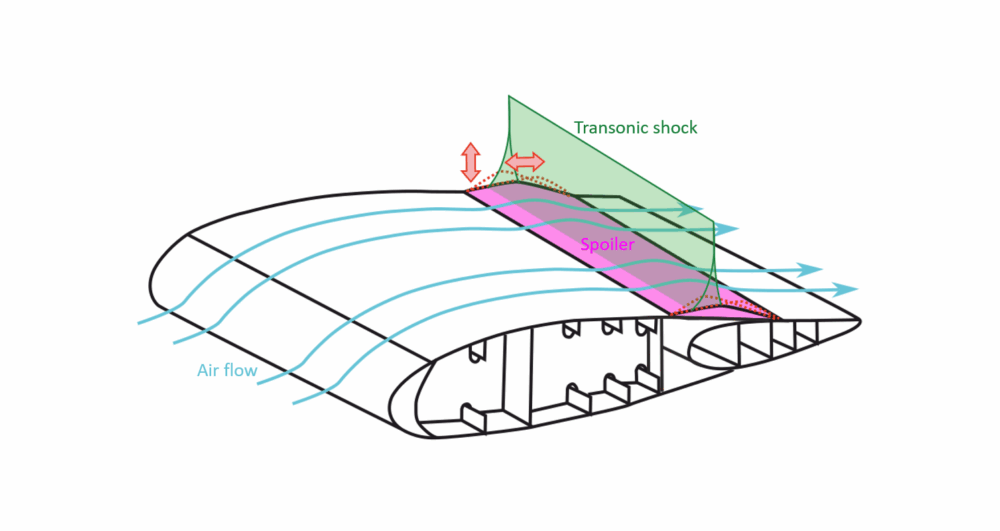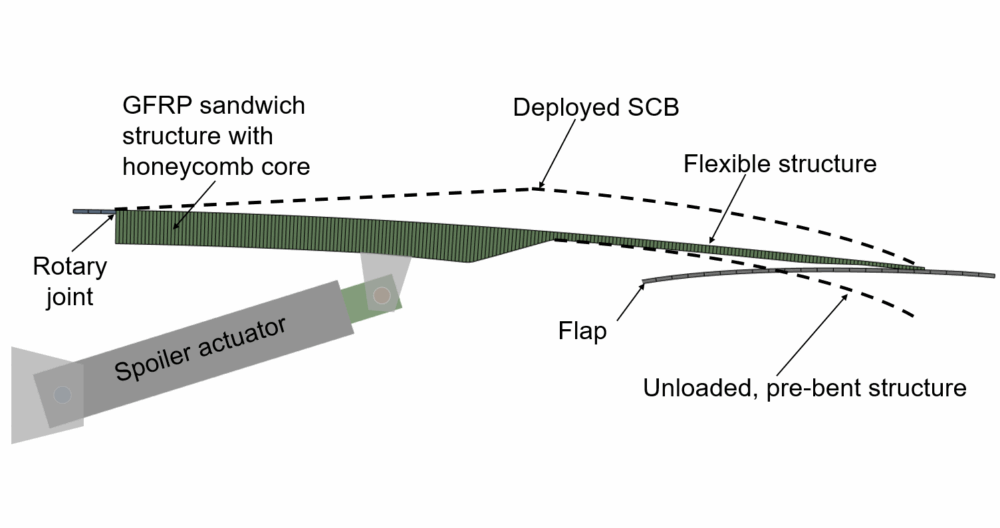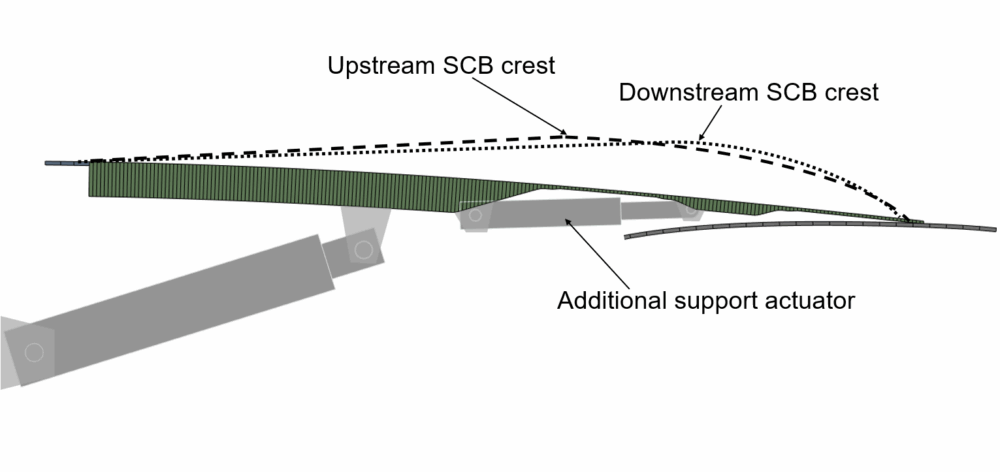The transonic cruise flight represents a compromise between the highest possible cruising speed and thus shorter flight time with the lowest possible fuel consumption. Aircraft manufacturers and airlines make this compromise in order to operate in a profit-orientated manner, particularly against the background of rising fuel prices and the pursuit of emission reductions in air traffic. At these flight speeds, however, transonic shocks still form on the wings. These shocks generate wave drag, which increases the overall drag of the wing. The buffet phenomenon can also occur, whereby vibrations are introduced into the wing structure. Shock control bumps (SCBs) can be used in the vicinity of a shock to reduce the strength of the shock and thus save fuel and delay the onset of the buffet. In order to be able to retract such SCBs outside their design range or actively adapt their shape, they must be designed adaptively. A morphing spoiler can be used in different ways for transonic shock control. While one concept can form a height-variable SCB using only an adaptively designed pre-bent structure without additional actuators, two other concepts combine this principle of structural pre-bending with additional actuators – including shape memory alloys (SMA). Additional support actuators enable precise shape control of the SCB so that it can be adapted to the different positions of the transonic shock.
Morphing spoilers for active drag reduction
SCBs have a height of only 0.3 % to 0.8 % of the tread depth and range from 10 % to 20 % of the wing chord. Investigations with adaptive SCBs were carried out by Goerttler (2024) as part of the LuFo project Move-IntegR (FKZ: 20W1729C). These have shown that a long-haul aircraft with Hybrid Laminar Flow Control (HLFC) can reduce drag by approximately 2% in an exemplary flight mission of 9000 km. This results in fuel savings of approximately 1000 kg.
In morphing, structures are designed to vary in shape in order to actively change their form and thus adapt to aerodynamic conditions. The spoiler is a particularly interesting component for morphing applications because it is already an adaptive system with an actuator. With the solution of a structural pre-bending of the spoiler, an SCB can be formed as soon as the actuator extends a bit. Meanwhile, the pre-bending keeps the trailing edge of the spoiler on the landing flap. As no additional actuator is required for this concept, it is referred to as a single-actuator concept according to Künnecke (2022) et al. ( 2022) According to Goerttler (2024), the above-mentioned fuel reductions can be achieved with this concept.
Additional support actuator for shape control of the SCB
According to Künnecke et al. (2023), (2023) an additional support actuator can be used to adapt the SCB to the changing environmental conditions and the resulting change in shock position. For this purpose, precise control of the bump crest position can be achieved with a combination of just two actuators in series and a pre-bent spoiler structure, which limits the additional complexity of this system. However, if the installation space for a second conventional actuator is not sufficient Künnecke (2024) suggest that the support actuator can be designed as a shape memory alloy. These are characterised by their large reversible elongation so that they can develop high forces with comparatively small cross-sections. Such actuators can therefore be designed to save space, which makes them an attractive solution for problems with limited installation space.










